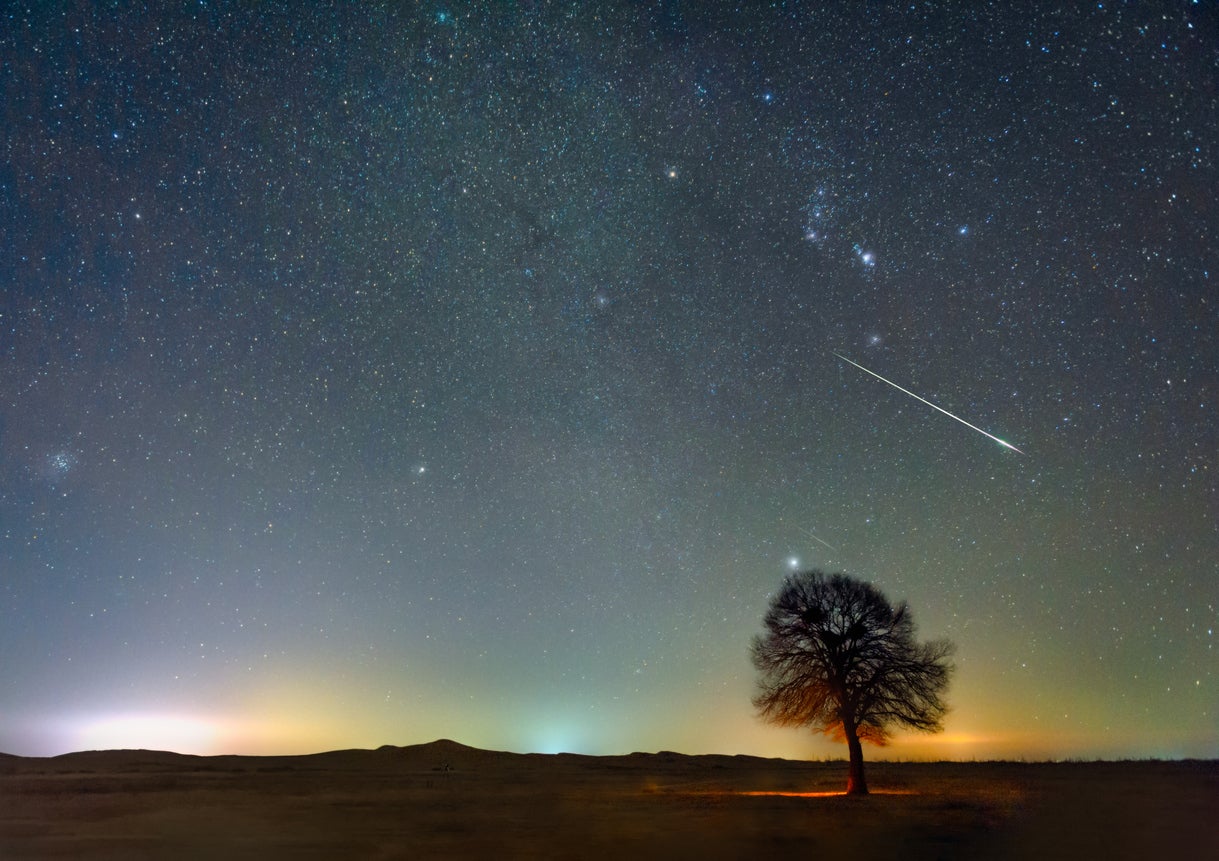
The Geminids peak this Friday, making it one of the year's last chances to see fireballs in the sky.
The spectical is among the few major meteor showers to come from asteroids and often produces meteors with a distinctly more yellow glow.
This is likely due to the unusual origin material, said Sally Brummel, planetarium manager at the University of Minnesota’s Bell Museum.
Under ideal viewing conditions, the Geminids typically put on one of the best and brightest shows of the year because of the high volume of meteors visible each hour. However, an almost full moon this year means up to 15 meteors per hour are expected at peak time, according to the American Meteor Society.
The moonlight “will wash out a lot of them," Brummel said.
Key Points
- The Geminid meteor shower, originating from an asteroid, peaks on Friday, December 15th.
- Despite typically being a vibrant display, this year's shower will be impacted by a near-full moon, reducing visibility to approximately 15 meteors per hour.
- The Geminids are known for their yellowish glow. Viewing opportunities continue until December 21st.
- Meteor showers are visible without special equipment.
Viewing lasts until Dec. 21.
Multiple meteor showers occur annually and you don’t need special equipment to see them.

Most meteor showers originate from the debris of comets, but a few — including the Geminids — result from the debris of asteroids. The Geminids come from the sun-orbiting asteroid 3200 Phaethon.
When rocks from space enter Earth’s atmosphere, the resistance from the air makes them very hot. This causes the air to glow around them and briefly leaves a fiery tail behind them — the end of a “shooting star.”

The glowing pockets of air around fast-moving space rocks, ranging from the size of a dust particle to a boulder, may be visible in the night sky.
The rocky nature of asteroid debris makes the Geminids especially likely to produce fireballs, said NASA's William Cooke. “Those are pretty tough rocks that can penetrate deep into the atmosphere,” he said.
How to watch a meteor shower
Meteor showers are usually most visible between midnight and predawn hours.
It’s easier to see shooting stars under dark skies, away from city lights. Meteor showers also appear brightest on cloudless nights when the moon wanes smallest.
And your eyes will better adapted to seeing meteors if you aren’t checking your phone.
The next meteor shower, the Ursids, will peak on Dec. 22.







